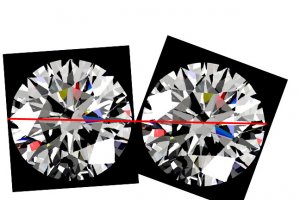adamasgem
Brilliant_Rock
- Joined
- May 23, 2003
- Messages
- 1,338
Date: 6/12/2005 6:30:53 PM
Author: Garry H (Cut Nut)
Marty you are talking a whole heap of tommy rot.
Gary, you are a very good marketer, but not such a good engineer. I have clearly stated what I see in the data, have shown the data, publically presented i, and gave my best engineering judgement on the cause of what I see. You however, continually feed the community unsubstantiated misinterpretations of others work.(line edited by Pricescope request to remove what I really said and felt). If you want to criticize or make comments then please state your scientific basis or reasoning for what I have seen.
Fire is spectral colors Yes
if you have developed a method to show fire as second or third order dispersion colors then I for one will not pay you a cent for it and no one else should either
1) I probably wouldn't sell you any of my technology, .. just because you are you
2) You call what I photograph second and third order dispersion colors. Could you please enlighten the community on the scientific basis for YOUR "analysis" as stated?
As you can see on the thread with the calcite, it takes something like double refraction to cause 'muddy colors'.
You appear to be entirely wrong, based on my phototgraph evidence. Do you have the any analysis to explain what I see and have photographed? I seriously doubt it. Maybe Sergy can explain the internal mixing of light, but his simulations are based on non absorbing diamonds, and my photographs are real, and include the internal absorption of light as a function of the color of a diamond, which can be shown to reduce chromatic flare. Simplistically, as the color of a cape series diamond increases, there is more and more internal absorption of the light rays in the blue region of the blue to green region of the spectrum. Physical fact, baby. My SAS2000 clients have the capability to do such a ray trace analysis, and if you would like to pay me, I be happy to do such an analysis on any diamond that you can supply the wavelength dependent absorption coefficients. To due the analysis correctly you have to measure this through a known pathlength, but you probably already knew that.(Line editited by Pricescope request to remove personal opinion).
Maybe a totally unrealistic 5000 point light source will do that.
Oh, "unrealistic", you say! Put your money where your mouth and marketing is. (line edited by Pricescope request to remove more descriptive language) I can prove that it emulates a natural and realistic environment.)
And btw I checked the thread you keep referring to that Saergey was supposed to have got frightened of - that was all pretty wierd too.
It is too bad that you couldn't understand it, but YOU did post a Diamondcalc Photoreal side by side image that clearly showed my analyses on potential problems with metics based on a tilted viewpoint was correct.
And when I took the same data averaged over all azimuths and plotted it versus tilt angle, the thread stopped, because the data showed apparent discontinuities (50% drops) in a limited FOV metric, in the same range where DiamondCalc used a 30 degree tilt metric, the thread stopped.
I merely discussed my data, which seemd to point out a potential for serious errors in relative assesment of diamond cut if one relied on limited FOV perspectives based on reverser (or forward) raytrace, and that blindly making an assesment of the relative goodness of a diamond at some randomly selected tilt angle could give erroneous results. Now doing a million or so rays is very computationally intensive, so people who arbitrarily choose a tilt and/or azimuth to judge one diamond over another haven't done their homework, but perhaps in your infinate wealth of knowledge you profess to this community, you missed the point, but actually you didn't, as IT WAS YOU who proved my point, for which I thanked you.
This goes to my long held belief that GIA ORIGINALLY HAD IT CORRECT when they chose to do a weighted light return which considered the ENTIRE diamond, instead of one or two limited viewpoints, and that their cosine squared qeighting function for brillance made sense. What DIDN"T make sence, is that they continue to use a uniform intensity illuminated hemisphere, which IS NOT A REALISTIC illumination environment, and doesn't emulate ANY typical enviroment one might see in the real world, other than through their viewing hemisphere (half of an integrating sphere)
I also showed the technical data that high angle lighting in such an environment WOULD NOT HAVE ZERO illumination from HEAD obscuration, and that the HEAD reflects a not insignificant amount of light, otherwise we wouldn't be able to see anyones face, and therefore a "black hole" head obscuration in NOT REALISTIC in ANY NORMAL VIEWING environment, and can severly alter relative metrics of diamond brilliance.





300x240.png)